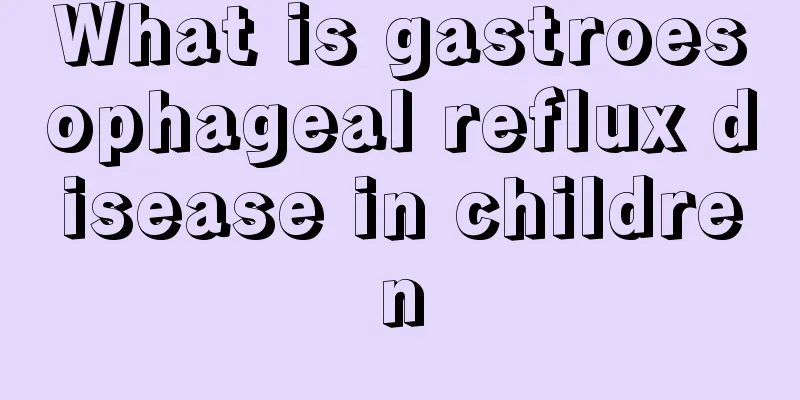What is gastroesophageal reflux disease in children

|
Maybe you are not very familiar with childhood gastroesophageal reflux disease. Childhood gastroesophageal reflux disease is not a common disease. However, due to the great harm of childhood gastroesophageal reflux disease, we recommend that parents help children prevent this disease in daily life. Once a child has this disease, parents should pay attention to it and send the child to the hospital for consultation in time. Below we will introduce what childhood gastroesophageal reflux disease is. Gastroesophageal reflux (GER) is the backflow of gastric or duodenal contents from the stomach into the esophagus. The cause of physiological GER is the incomplete development of the local sphincter of the cardiac cavity in infants. There is no organic lesion and the condition gradually improves within 18 months after birth. Pathological reflux often has anatomical abnormalities or secondary lesions, causing a series of symptoms such as burning sensation behind the sternum in older children, acid reflux, persistent vomiting and growth retardation in infants and young children, and recurrent respiratory symptoms that do not heal. This is called gastroesophageal reflux disease (GERD). Gastroesophageal reflux disease has the following characteristics: (1) Shortly after birth, infants may vomit repeatedly, with symptoms such as spitting up milk or projectile vomiting, which may resemble pyloric obstruction. But vomitus usually does not contain bile. Feeding difficulties (such as crying due to hunger but becoming irritable when fed). Recurrent vomiting in older children excluding other causes. (2) Growth retardation due to long-term vomiting and insufficient intake. (3) Recurrent respiratory symptoms: recurrent asthma attacks (mostly at night), or bronchitis, aspiration pneumonia, atelectasis, and in severe cases, cyanosis, suffocation, and even death. (4) Complications: The infant may cry and become irritable. In older children, a burning sensation behind the sternum and acid reflux are the main symptoms. It often occurs after meals, worsens when lying down, and is relieved after taking antacids. There may also be pain behind the sternum, chest tightness, and difficulty swallowing. When accompanied by esophagitis or esophageal ulcer, vomiting, black stools (or positive occult blood in stool), and anemia may occur. In the above article, we introduced a relatively rare disease, that is, gastroesophageal reflux disease in children. We know that gastroesophageal reflux disease in children is very harmful, so everyone should pay attention to this disease. In the above article, we introduced in detail what gastroesophageal reflux disease in children is. I believe everyone has understood it. |
<<: Treatment of gastroesophageal reflux disease in newborns
>>: How to prevent colds in children in spring
Recommend
What should children pay attention to when filling their teeth
Children's teeth are relatively fragile, and ...
Normal index of neonatal jaundice
Jaundice is also a disease of jaundice, commonly ...
How to treat mumps in children effectively
Children are more likely to get mumps because the...
Nine taboos that babies should not violate in their diet
During the growth and development stage of babies...
Three methods of correcting baby's head shape
Because the bones of a baby's head are not fu...
What’s going on when my baby has red spots on his chest and back?
Many babies are born with very sensitive skin. So...
Causes of yellow eyes in babies
Many babies have yellow eyes, which makes many pa...
How to supplement calcium deficiency in children? There are many methods we have overlooked!
Nowadays, many parents buy some expensive health ...
What should I do if my child is frightened and has a fever?
Because children are unfamiliar with things in th...
The harm of low-grade fever in babies
The phenomenon of a baby's persistent low-gra...
What to do if your child has cerebral palsy
Cerebral palsy in children is actually a disease ...
What to do if your child stops breastfeeding
When the baby is weaning, the mother will feel un...
What is the difference between developmental delay and autism?
Autism is a social disorder that causes great dif...
Why does a child like to cry at every turn?
Children who cannot speak yet often express their...
Is 37 degrees considered a fever in children?
When children are young, they are particularly pr...









